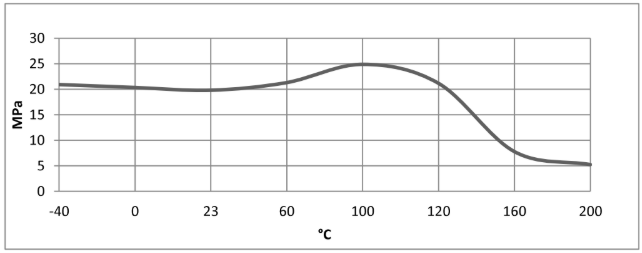Enhanced TDS
Identification & Functionality
- RTU Product Type
- Technologies
- Product Families
Features & Benefits
- Ready-to-Use Product Features
- Features and Benefits
- Electrically conductive to enable static discharge
- Temperature resistant up to 180°C
- Excellent resistance to most common chemicals
- Non flowing paste for ease of application
- Post cure recommended for optimum properties
Applications & Uses
- Application Area
- Compatible Substrates & Surfaces
- Markets
- Applications
- Processing Information
- Pretreatment: The strength and durability of a bonded joint are dependent on proper treatment of the surfaces to be bonded. At the very least, joint surfaces should be cleaned with a good degreasing agent such as acetone or other proprietary degreasing agents in order to remove all traces of oil, grease and dirt. Low-grade alcohol, gasoline (petrol) or paint thinners should never be used.The strongest and most durable joints are obtained by either mechanically abrading or chemically etching ("pickling") the degreased surfaces. Abrading should be followed by a second degreasing treatment.
Mix ratio Parts by weight Parts by volume Araldite®40300 100 100 Hardener 40301 50 50 Resin and hardener should be mixed together at room temperature stirring thoroughly.
- Application of adhesive: The resin/hardener mix is applied directly or with a spatula, to the pretreated and dry joint surfaces. A layer of adhesive 0.05 to 0.10mm thick will normally impart the greatest lap shear strength to the joint. The joint components should be assembled and clamped as soon as the adhesive has been applied. An even contact pressure throughout the joint area will ensure optimum cure.
- Mechanical processing: Specialist firms have developed metering, mixing and spreading equipment that enables the bulk processing of adhesive. We will be pleased to advise customers on the choice of equipment for their particular needs.
- Equipment maintenance: All tools should be cleaned with hot water and soap before adhesives residues have had time to cure. The removal of cured residues is a difficult and time-consuming operation. If solvents such as acetone are used for cleaning, operatives should take the appropriate precautions and, in addition, avoid skin and eye contact.
Typical cure requirements
Temperature °C 40 60 100 Cure time to reach
Lap shear strength > 1 MPa
80 min. 15 min. < 5 min. Cure time to reach
Lap shear strength > 10 MPa
6 h 40 min. 15 min. To achieve optimum performance properties an elevated temperature cure or post cure is recommended. Lap shear strength of 1 MPa represents a strength where careful handling of the bonded object is possible. This adhesive will not fully cure at temperatures below 60°C.Suggested cure schedules are:8hrs at 80°C or 1 hr at 130°C or 30 mins at 150°C.
Properties
- Physical Form
Technical Details & Test Data
- Typical Cured Information
Unless otherwise stated, the figures given below were all determined by testing standard specimens made by lapjointing 114 x 25 x 1.6 mm strips of aluminium alloy. The joint area was 12.5 x 25 mm in each case. The figures were determined with typical production batches using standard testing methods. They are provided solely as technical information and do not constitute a product specification.
Lap shear strength versus temperature (ISO 4587) (typical average values)
Cure: = 24 hours at 23⁰C + 1 hour at 130⁰C
DMA measurement (typical average values)
Torsion mode, Ramp rate 2°C/min, 1Hz, Strain of 0.1%.
Cure: 24 hours at 23⁰C + 1 hour at 130⁰CTemperature (°C) Storage Modulus (G')
100°C 1590 MPa 125°C 539 MPa 150°C 59 MPa 175°C 57 MPa 200°C 59 MPa Glass transition temperature (Tg) peak - 135°C
Tensile properties (typical average values) ISO 527
Cure: 24 hours at 23°C + 1 hour at 130°C
Test at 23°CTensile Strength - 55 MPa
Tensile Modulus - 4600 MPa
Elongation at break - 1%Electrical resistivity (typical average value) ISO 1853
Cure 24 hours at RT + 1 hour at 130°C
Determined at 23°C using the 2 points method
Sample dimensions: 75 x 20 x 2 mmResistivity : 3 (+/-2) 106Ohm.cm
Storage & Handling
- Storage and Handling Information
- Araldite® 40300 and Hardener 40301 may be stored at room temperature during 2 years, provided storage is in original sealed containers. The expiry date is indicated on the label.
- Our products are generally quite harmless to handle provided that certain precautions normally taken when handling chemicals are observed. The uncured materials must not, for instance, be allowed to come into contact with food stuffs or food utensils, and measures should be taken to prevent the uncured materials from coming in contact with the skin, since people with particularly sensitive skin may be affected. The wearing of impervious rubber or plastic gloves will normally be necessary; likewise the use of eye protection. The skin should be thoroughly cleansed at the end of each working period by washing with soap and warm water. The use of solvents is to be avoided. Disposable paper
Other
- Appearance
- Dark grey paste
- Application Information
Value Units Test Method / Conditions Mix Ratio 0.5 - Hardener : Resin - Physical Properties
Value Units Test Method / Conditions Specific Gravity 1.55-1.65 -
